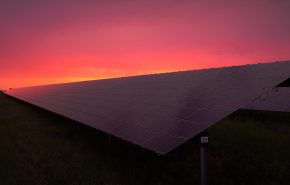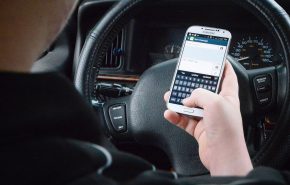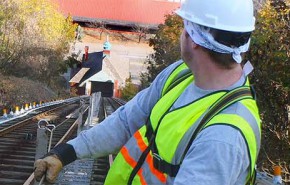Put on your sunscreen and shades folks! For the rest of summer 2017, protecting your skin and eyes from the sun should be your number one focus.
This summer provides two key opportunities to raise awareness on sun protection: July is ultraviolet (UV) Safety Month and on August 21, the Great American Eclipse will sweep nearly 2500 miles across the US.
Summer is often considered a time of fun in the sun, but extra sun exposure brings additional risk from UV light, both UVA—responsible for that wrinkled and leathery look of someone’s skin that was unprotected for many years (A for aging)—as well as UVB, which are the rays that actually burn your skin (B is for burn). And of course, both contribute to a higher risk of skin cancer.
Protecting your skin from UV light is fairly straightforward. Some simple steps to implement on a daily basis include:
- Avoid the sun as much as you can between 10 AM and 4 PM.
- If you must be in the sun, protect your skin with proper clothing and a full spectrum sunscreen, applied regularly throughout the day—every two hours during peak sun exposure is ideal.
- Protect your eyes by wearing a hat with a brim (ball cap or full brimmed) and by wearing wrap-around style sunglasses that have a 99 or higher UV block protection rating.
In addition to the harm UV light causes our skin, it can be equally damaging to our eyes as it can penetrate the eye structure and cause cell damage. Too much UV exposure may cause cataracts, macular degeneration, and cancerous growth of the conjunctiva (the mucous membrane that covers the front of the eye and lines the inside of the eyelids) that obstructs vision.
Viewing the Solar Eclipse Safely
On August 21, anyone along a 70-mile path from Oregon to South Carolina can view the total solar eclipse in the US. Several maps are available to determine the timing of the eclipse in your area as well as the percentage of coverage you can expect. For example, in Western Pennsylvania where GAI Consultants is headquartered, somewhere between 80-90% of the sun will be eclipsed between 2:30-2:45 PM EDT. In Florida, where the second largest number of GAI staff are based, the coverage will be the same but will occur between 2:45-3:00 PM EDT.
![]() During the eclipse the sun will disappear behind the moon, turning daylight into twilight and causing the temperature to drop rapidly. Most of us watching will see streamers of light streak through the sky around the moon’s silhouette. For many, this is a once in a lifetime event and expensive viewing packages in prime areas are nearly sold out or cost upwards of $5,000.
During the eclipse the sun will disappear behind the moon, turning daylight into twilight and causing the temperature to drop rapidly. Most of us watching will see streamers of light streak through the sky around the moon’s silhouette. For many, this is a once in a lifetime event and expensive viewing packages in prime areas are nearly sold out or cost upwards of $5,000.
Most of us will want to try and take advantage of this event near our homes or offices. If you do, protecting your eyes will not only provide maximum viewing but will also prevent damage. Here’s what you should know and do:
- You can view the eclipse safely by making a pinhole camera—allowing you to see only a projection of the sun and moon.
- You can look at the eclipse without eye protection, but only when the eclipse is complete. If you are lucky enough to be somewhere to see the total eclipse, it will last for less than three minutes. Viewing without protection will require good timing and some pretty fast footwork.
- Use solar viewing glasses, also known as eclipse glasses, which are thousands of times darker than regular sunglasses. While these glasses are widely available with the eclipse just around the corner, buyer beware! These glasses need to be purchased from a manufacturer who follows the requirements of the International Organization for Standardization (ISO) 12312-2. Don’t make the mistake of assuming that wearing multiple pairs of sunglasses will provide the same protection.
- If you are trained to use other optical devices like telescopes and binoculars, they must be equipped with a separate solar filter to provide the protection you need. Telescopes won’t necessarily help with eclipse viewing, but binoculars might.
So enjoy the rest of the summer, but do it safely by protecting your eyes and skin from the harmful sun rays. We also hope everyone gets to experience the eclipse in a safe and fun manner!
![]() As Health & Safety Director, Bill Gourdie is responsible for spearheading initiatives that help GAI comply with all applicable health, safety, and environmental regulations; client requirements; and corporate policies and procedures in order to maintain the safest possible working conditions for all employees. He supports and advances GAI’s commitment to safety by coordinating the development, implementation, and continuous improvement of the company’s Safety & Health Program to enhance its effectiveness and improve performance results. Bill may be reached by phone at 412.399.5219.
As Health & Safety Director, Bill Gourdie is responsible for spearheading initiatives that help GAI comply with all applicable health, safety, and environmental regulations; client requirements; and corporate policies and procedures in order to maintain the safest possible working conditions for all employees. He supports and advances GAI’s commitment to safety by coordinating the development, implementation, and continuous improvement of the company’s Safety & Health Program to enhance its effectiveness and improve performance results. Bill may be reached by phone at 412.399.5219.


